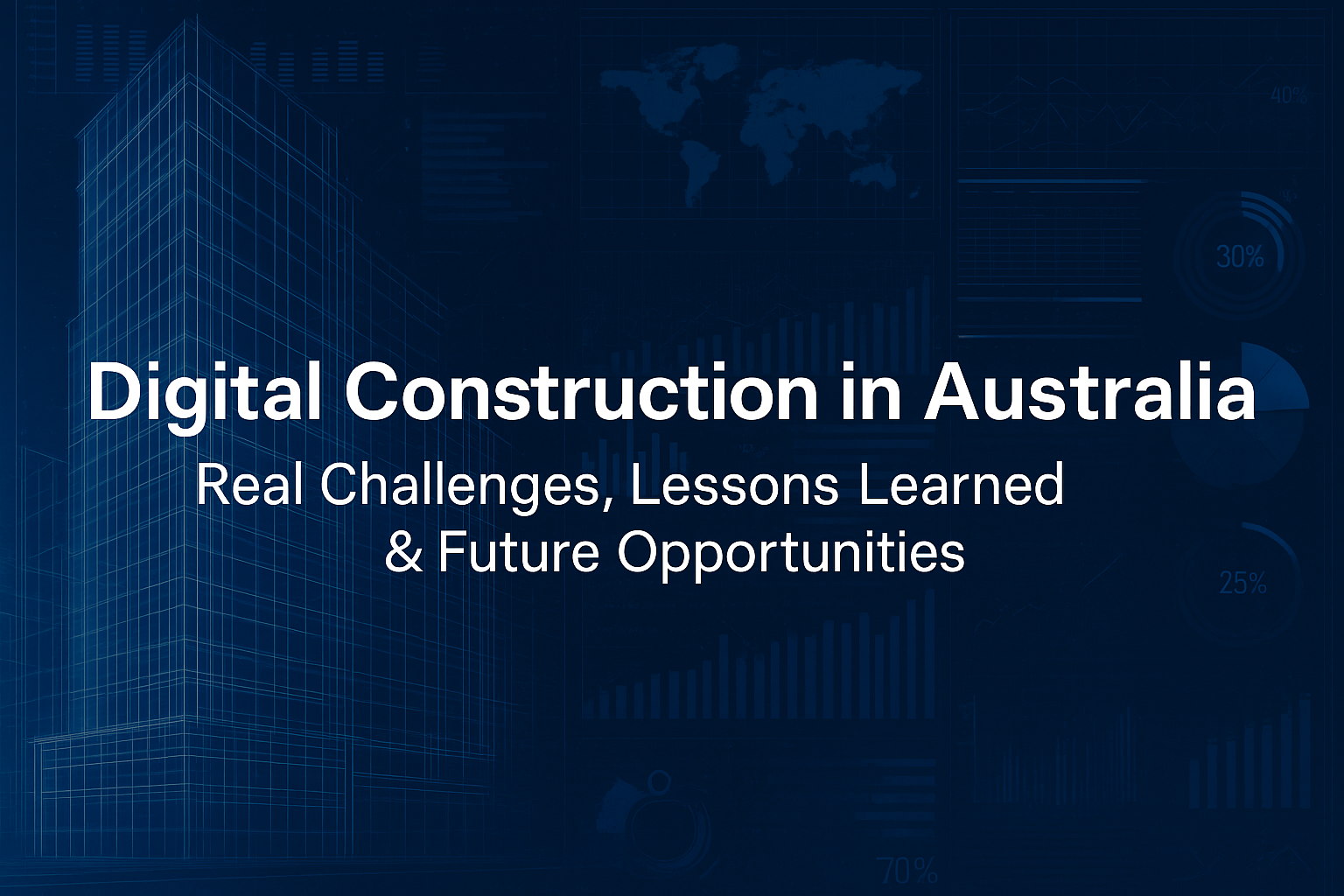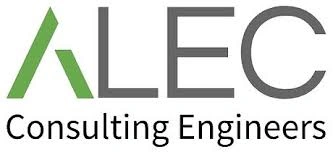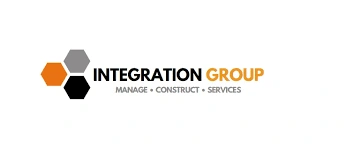
The Australian construction industry is rapidly evolving, and digital construction is at the center of this transformation. From architecture to MEP and structural design, civil works and facilities management, digital tools are enabling smarter, faster, and more collaborative project delivery.
But adoption hasn’t been without its hurdles. In this article, we explore the real-world challenges, the lessons learned, and the future opportunities across various sectors of the AEC industry in Australia.
Architecture: From Design to Data-Driven Delivery
Challenges:
Architectural firms often face friction when transitioning from traditional CAD workflows to fully integrated BIM processes. Inconsistent BIM standards between clients, consultants, and contractors can lead to misalignment.
Lessons Learned:
Architects who embrace early collaboration with consultants and digital engineers create more coordinated, buildable designs. Well-defined BIM Execution Plans (BEPs) and a Common Data Environment (CDE) are now recognized as essential.
Opportunities:
Tools like Revit, Enscape, and cloud-based BIM platforms enable real-time visualization, faster iterations, and more informed design decisions. With growing client demand for digital deliverables, architects have a chance to lead the charge in smart, sustainable design.
MEP: Coordinating Complexity in 3D and 4D
Challenges:
MEP coordination is one of the most complex parts of any project. Late engagement and siloed design can lead to costly clashes and delays on-site.
Lessons Learned:
Early prefabrication planning and integrated 3D modelling across mechanical, electrical, and plumbing disciplines significantly reduce on-site errors. Firms that adopt coordinated BIM workflows are delivering more accurate and efficient installations.
Opportunities:
4D sequencing and prefab-ready models are opening doors for leaner delivery. There’s huge value in connecting digital models to off-site manufacturing and real-time issue tracking.
Structural: Balancing Detail with Practicality
Challenges:
Structural engineers must walk a fine line between detailed modelling and file performance. Excessive model detail can become a burden if not managed correctly.
Lessons Learned:
Smart modelling practices—using levels of development (LOD) and defined scopes—help structural teams deliver useful, scalable digital models. Coordination with architects and MEP early in the design phase is critical.
Opportunities:
Digital structural modelling allows for faster clash detection, material optimization, and integration with analysis software. With the rise of sustainable construction, digital tools are also supporting embodied carbon tracking in structures.
Civil: Connecting the Site with the Digital
Challenges:
Civil works are often disconnected from the vertical build, leading to gaps between models and real-world conditions. Survey data, design changes, and site logistics can get lost in translation.
Lessons Learned:
Integrating GIS, laser scanning, and UAVs (drones) with civil BIM models creates a clearer picture of the project context. Civil teams benefit from tighter coordination with architects and engineers using shared digital platforms.
Opportunities:
Civil projects are increasingly using 4D/5D planning, clash detection, and real-time site data to minimize disruption and reduce rework. Digital twins are starting to emerge in large-scale infrastructure projects.
Facilities Management: Digital Handover is the New Standard
Challenges:
Too often, facilities managers are handed incomplete or disorganized data at project close-out. Without structured asset information, long-term maintenance becomes inefficient.
Lessons Learned:
Establishing FM data requirements at the start of a project ensures accurate asset data is collected throughout. A well-structured digital handover saves time, money, and stress.
Opportunities:
Cloud-based platforms and COBie-compliant models are enabling smarter operations. Digital twins and IoT integration are unlocking real-time monitoring, predictive maintenance, and improved asset lifecycle performance.
Building Smarter Together
Digital construction in Australia is no longer a vision—it’s happening now. Each sector across the AEC industry is learning how to navigate this shift, one project at a time. While challenges remain, the lessons learned are leading to smarter collaboration, faster delivery, and better outcomes for everyone involved.
At Draftech, we work with clients across architecture, MEP, structural, civil, and FM disciplines to deliver tailored digital engineering support. From BIM coordination and issue tracking to digital handover and cloud-based project management, we help teams navigate the complexity and realize the benefits of digital construction.
👉 Let’s build smarter—together. Get in touch with the Draftech team to find out how we can support your next project.
Testimonials
Thank you for all your efforts on our projects; they have been an invaluable contribution to their success. We look forward to working with you on future projects.
Ian Ferguson MPM Group
Jess and Karl at Draftech were amazing. The communication from the start was prompt, and the entire process was extremely easy. We needed their knowledge on Air Schematics, and they had made one up for our buildings that we service. Thanks so much, and we will be using you guys in the future. Cheers, Air Control Australia.
Greg Colebrook AirControl Australia
With Draftech’s thorough understanding of building services modelling and close attention to detail, Forth has been afforded the opportunity to outsource some of our BIM projects with absolute confidence in the accuracy of the final product.
Gary Murdoch Forth Consulting
Very professional and efficient organization. Delivered a great product to a tight deadline.
ACE Power
Karl and the team are very professional and have a vast knowledge of BIM coordination.
Dwayne Willaims Babinda Electrics
We had multiple large projects with tight deadlines and needed a company we could trust. The teams delivery, attention to detail and understanding of what is being designed is always executed to a high standard.
Martin O’Donovan Envar Engineers
Draftech offered a flexible and reliable approach to working collaboratively with our team. They met our expectations and quality requirements and also offered up new ideas.
Draftech have proven to be a valuable and trustworthy resource and we will continue to work with Draftech on other projects.
Simon Marsden Umow Lai
Draftech is different from others in the professionalism and features they provide.
The ability to walk through projects in real time online provides invaluable insight into problem areas and helps provide an efficient resolution on the spot without many phone calls, emails and the necessity for us to paw through countless drawings to understand the issues.
Todd Morris Manager - Air mech
Draftech were put forward to FIP Electrical as the solution to Coordinate, Model, carry out clash detection, provide Electrical Services Shop Drawings, as built documentation and completed electrical model.
Simon Thorpe FIP Electrical
In close collaboration Draftech set up all our systems and model deliverables. In this process Draftech have proven to be a valuable resource for us and demonstrated commitment, understanding and professionalism.
David Skelley DJCoalition
Draftech’s attention to detail and proactive nature throughout the project assisted us in identifying issues before becoming evident on site, saving us both time and unexpected costs.
Matt Payne PJM Engineering Services
They delivered very high quality Revit models and associated 2D documentation at key milestones, working to a tight budget and in strict accordance with the Architects’ BIM requirements.
Peter Thomas Geoff Hesford
We found Draftech’s work to be of high standard and the team delivered exactly as agreed, in fact, when we considered the project complete, Draftech put further resources into the project as they were not satisfied.
John Johnson Beca
Engaging Draftech during design gave us the tools to make smart decisions.
Hansen Yuncken Design Manager - Michael Harkins
The drafting service is timely, reliable and fit for purpose for the built environment.
Peter Harvey Harvey Industries
Draftech stands apart from other drafting services that we have previously used in their attention to detail and ability to adapt to the individual client’s requirements.
Doug Holt McCaig Aircon
I can confidently recommend Draftech as a solid and reliable supplier, and experts in their field. I look forward to working with them again in the near future.
Chris Behan Norman Disney & Young
After seeing the benefits Draftech provided us on the Townsville Hospital Redevelopment we have set up a relationship with Draftech and intend to continue to use their BIM knowledge and skills for our future projects.
Brad Lund Energy Power Systems
Draftech has no competition as they are in a class of their own.
John Boyes Babinda Electrics
Draftech Developments Drafting and Design Capabilities, in conjunction with their outstanding level of Client service and support has provided great solutions to our engineering and Drafting Design portions within our Gorgon Barrow Island Project.
Aaron Hazelton Applied Electro Systems Pty Ltd
Draftech set up necessary systems and workflows very quickly, but also setup auditable estimating and weekly cost tracking processes that we utilised, requiring little maintenance.
TOM PURDON MPM GROUP
































